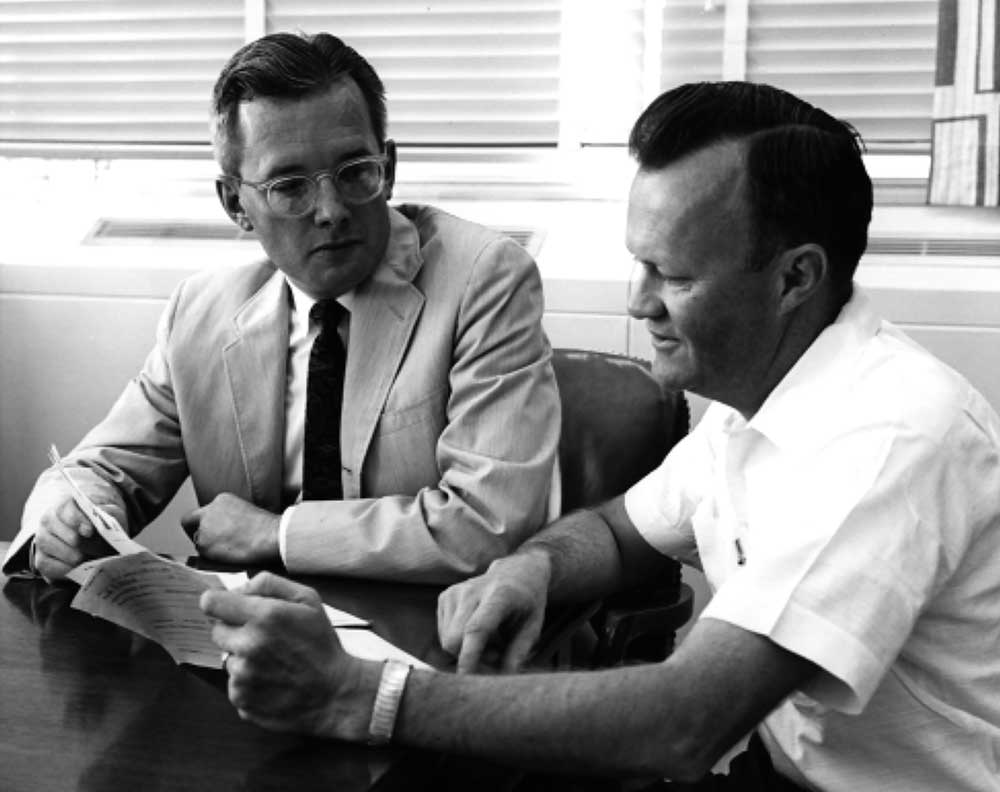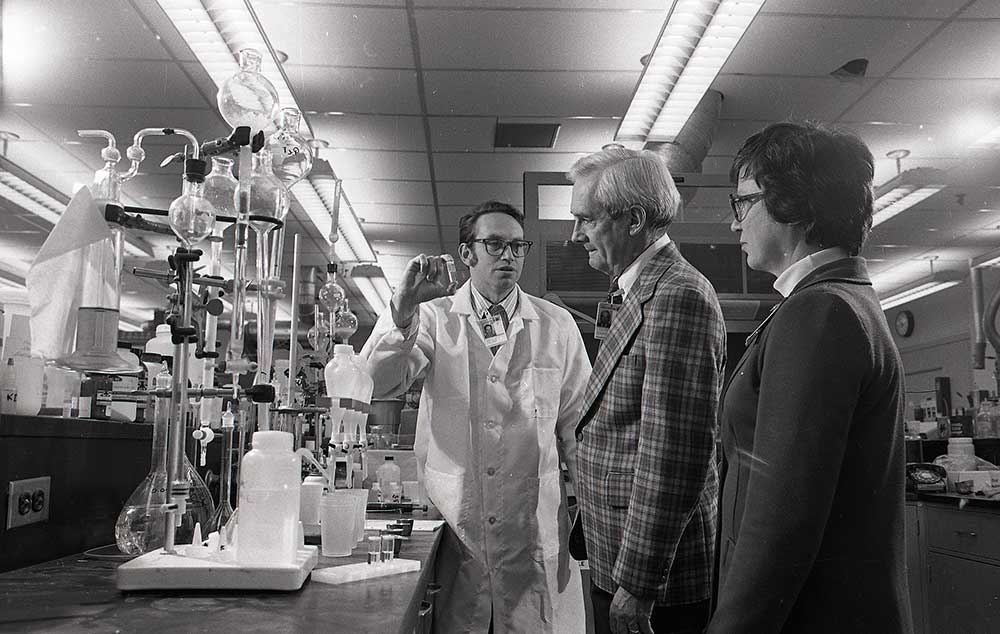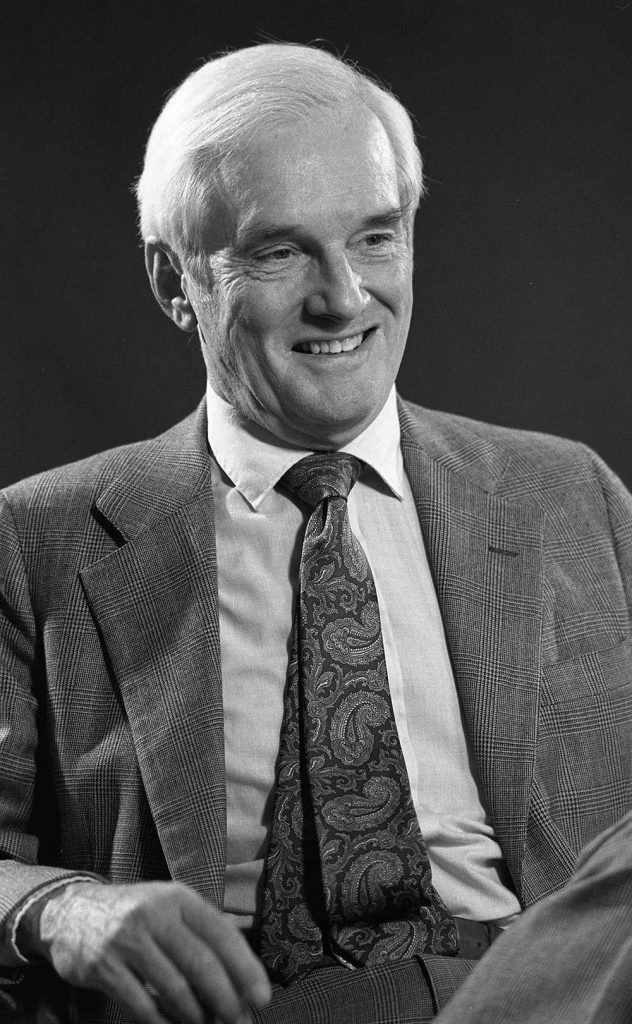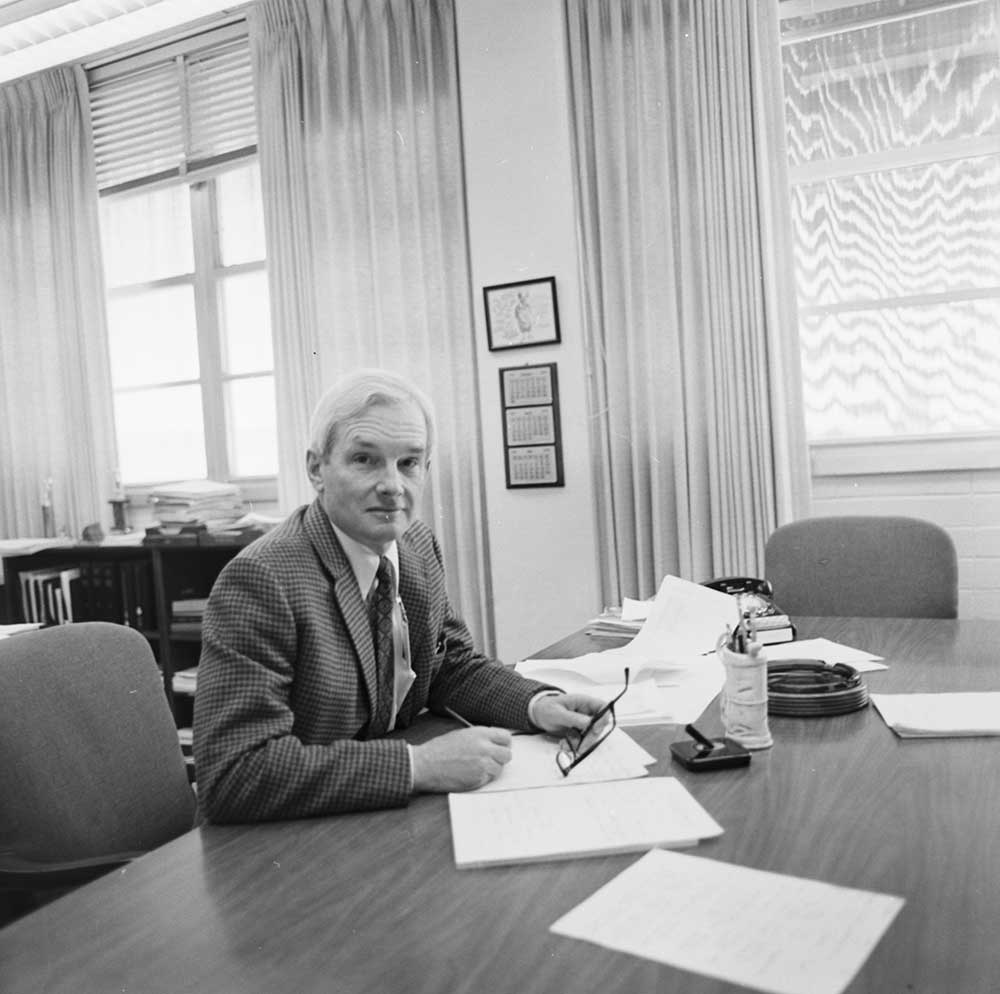
Richard Claassen, a nuclear physicist, served as vice president of Sandia’s Livermore campus from June 15, 1982, to May 31, 1987. However, his greatest impact on the Labs perhaps dates to a 1957 presentation urging the development of a group within Sandia focused on fundamental physical sciences research.
Richard Claassen, also known as Dick, was born May 10, 1922, in Ithaca, New York, and died in Santa Rosa, California, on June 16, 2008, at the age of 86. He received his bachelor’s degree from Cornell University, where he met his wife, Ruth. He and Ruth had three children: Peter, Ann and Sarah.
During his master’s degree in physics at Columbia University, Claassen joined the Manhattan Project, serving as a research assistant at the Special Alloyed Metals Laboratory from 1944 to 1946. He built and used fluidic systems to test for leaks in diffuser tubes used for enriching uranium. At the end of the project, he continued his education and received a doctorate in nuclear physics from the University of Minnesota in 1950. Upon Claassen’s retirement, the Lab News editor of the time, Bruce Hawkinson, mused that he was likely the last Sandian who had directly worked for the Manhattan Engineer District.
From Sandia staff to vice president
Claassen joined Sandia in 1951 as a staff member in the electro-chemical division. By the summer of 1954, he was asked to demonstrate the feasibility of a new weapon delivery method called laydown.

“Laydown means releasing a weapon at very low altitudes and very high airplane speeds, then have it lie on the ground and wait for the delivery aircraft to escape before detonating,” Claassen told the Lab News in 1987. “In other words, you don’t just drop it, you lay it down. But there were some real problems. One was that the weapon would have to be slowed down. That meant parachute retardation — it’s hard to believe today, but in 1954, a lot of people believed that a nylon chute coming out of the airstream at Mach 1 would burn up.”
This challenge led to the development of Sandia’s parachute lab, high-speed photography expertise, and the building of the 300-foot drop tower in Tech Area III, he told the Lab News in 1987.
Claassen and Frank Hudson, with the support of the vice president of research — a position now referred to as associate Labs director — Glenn Fowler, spent several years preparing a proposal for a fundamental research group at Sandia. In 1957, Claassen presented this proposal first to the Labs president and then the president of Bell Laboratories.
This directly led to Claassen becoming the manager of the fundamental research department in 1957, he told the Lab News in 1987. In 1960, he was named director of physical research, moved to director of electronic components in 1968 and became director of materials and process sciences in 1975. In 1982, Claassen was appointed vice president of Sandia’s Livermore campus, which he called “the best VP assignment in the Labs,” in 1987.
A momentous memo
On March 16, 1957, Claassen gave his presentation to Mervin Kelly, the president of Bell Laboratories and a member of the Sandia Board of Directors, urging the development of a group within Sandia focused on fundamental physical sciences research. He documented the presentation in a May 1957 memo, which Susan Seestrom, associate Labs director of advanced science and technology from 2017 to 2023, credited as the origin for Sandia’s fundamental research efforts, inspired by the Bell Laboratories approach to investing in basic research.

“It’s the reason Sandia now has strong research organizations exploring the fundamentals of science and engineering, making an impact not only on national security but also on the international scientific community and global interest in the science of the possible,” Susan told the Lab News in 2022.
Within the memo, Claassen outlined how a fundamental research group would serve Sandia and its main mission, how such a group should be organized and the research focuses of such a group. He specified that radiation effects on materials, semiconductors and theoretical mechanics were all important topics for Sandia to research.
While Claassen of 1957 might have been surprised at just how important semiconductors would become, and the revolutions in microelectronics, microsystems, and computer modeling and analysis research on that class of material would produce, he was fully aware that Sandia needed to invest in such research to stay ahead in the literal and metaphorical arms races.
“…Inventions are difficult things to come by and cannot be sought directly as such,” Claassen wrote. “They can perhaps best be achieved by establishing the proper atmosphere for work by searching minds which are properly loaded with an impedance of known problems needing solutions. If the country is to maintain its lead in the technological weapons race, we must as a nation reach an equilibrium condition where the advances in fundamental technical knowledge balance the rate at which application can be made to new weapons designs.”

Claassen’s persuasive presentation and moving memo led to the establishment of such a research organization.
“Claassen’s objectives for a fundamental research organization still guide us today even though the nature of national and global security work has changed,” Labs Director James Peery told the Lab News in 2022. “Sandia has been strategic in adding new areas like high-performance computing, computational science, quantum information science and climate science. We have looked at what’s on the horizon and made investments through LDRD and other vehicles to bring in the scientists and engineers. We’ve had a true impact, not only in the scientific community, but also in the national security community.”